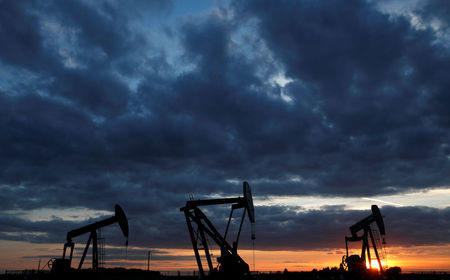
Investing.com — Former President Donald Trump’s energy agenda, encapsulated by the slogan “drill, baby, drill,” promised reduced regulatory barriers, increased fossil fuel production, and lower commodity prices.
However, the reality of US energy production remains rooted in economic decisions made by independent producers rather than political directives. These companies, accountable to their shareholders, must weigh global market dynamics when considering whether to increase drilling activity.
According to Wells Fargo (NYSE:) analyst Ian Mikkelsen, while some deregulation in the oil and gas sector is likely under Trump’s administration, the scale and impact of these changes remain uncertain. The process of modifying regulations could face delays and competition from other legislative priorities.
Furthermore, the Republicans’ narrow majority in Congress may constrain the breadth of reforms.
“One area that may be relatively easy to address is the permitting process for drilling on federal land,” Mikkelsen notes.
The Biden administration, in 2021, implemented stricter policies on federal leasing and permitting and raised production royalties, leading to a marked decline in the issuance of new drilling leases. Streamlining this process could reduce operational costs for companies operating on federal lands, which account for approximately 12% of US onshore oil production.
With the current lack of clarity regarding the potential scope of deregulation, Wells Fargo is maintaining their existing preferences within the energy sector.
More concretely, the firm continues to recommend Integrated Oil and Midstream Energy companies for investors seeking exposure.
Oil prices climbed on Wednesday as the market turned its attention to the potential supply disruptions stemming from US sanctions targeting Russian energy companies and tankers transporting Russian crude.
In its monthly oil market report released on Wednesday, the International Energy Agency (IEA) highlighted the potential impact of the latest sanctions, noting that they could significantly disrupt Russia’s oil supply and distribution. The agency added that “the full impact on the oil market and on access to Russian supply is uncertain.”
Concerns over the sanctions appear to be bolstering prices, alongside expectations of a potential drawdown in US oil stockpiles this week.
The key issue remains the extent to which Russian supply will be removed from the global market and whether alternative sources or measures can compensate for any resulting deficits.
Meanwhile, OPEC projects that global oil demand will increase by 1.43 million barrels per day in 2026, maintaining a growth rate similar to that expected in 2025.
This forecast aligns with OPEC’s longer-term outlook, which anticipates oil demand continuing to grow over the next two decades. This is in contrast to IEA’s view, which predicts demand will peak within this decade as the global transition to cleaner energy accelerates.
#Drill #baby #drill #Unpacking #Trumps #oil #gas #agenda #Investing.com